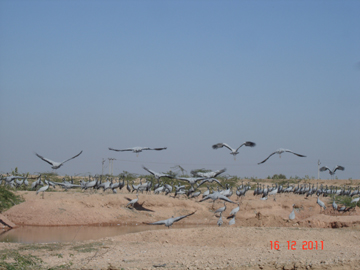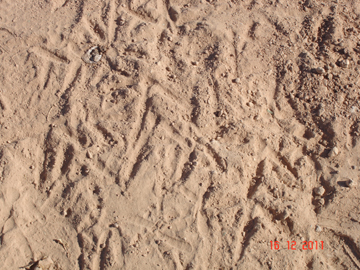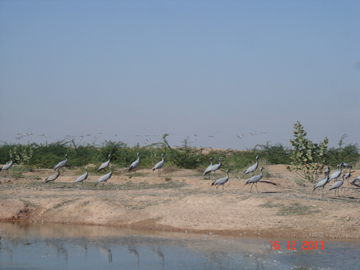Priya Phadtare
During a recent trip to Rajasthan, India, I decided to bring my camera along and take pictures of this
majestic land of colours and kings filled with wonders. My original itinerary included overnight stays atJaiselmerand Jodhpur but I decided to include
Khichan in the plan as well considering it was just 150 kilometers from Jodhpur on the way to Jaiselmer.
Khichanisa sleepy and a dusty
hamlet of thePhalodi Tehsil which is inhabited by the community of Marwaris.
The village is like any average dessert village found in Rajasthan except that it is the migratory pit-stop of the smallest and the second most abundant species of the crane species, the Demoiselle crane, around the world from the months of August to March.
One gets to see a maximum number of these birds in the months of December and January. I consider myself lucky to have chosen December to travel to Rajasthan.

The beautiful Demoiselle cranes gather around a cluster of at least five ponds inKhichanwhich are maintained by the locals.
A chat with Ratanji, a local Marwari helped me know the behavioral patterns of the birds better since he had been feeding them grain for the last many years. The cranes keep on hopping around the village the entire day as part of their daily routine.
In the morning they are fed grains in rectangular enclosures known as the chugga gharsafter which they descend into the areas around the ponds for a drink and a bath, a little away from the feeding area, in the afternoon. This is when I managed to
spot them. Ratanji told me that they are primarily omnivores but in Rajasthan they have become habitual of eating grain, otherwise they sometimes also feed on small animals and insects.

The cranes start their journey from Mongolia and the adjoining regions, which are their primary breeding grounds. The locals have
managed to decipher their flying pattern and community dynamics after observing them for quite long. I was told by Ratanji that they are very punctual and indulge in peculiar flight patterns. The birds are always led by a female crane followed by the offspring
perhaps and always mostly flanked by the males of the group. The cranes are known to exhibit strange communication characteristics like jumping, tossing grass and twigs around and sometimes also flapping their wings to attract the other’s attention. The noises
they make are very similar to the noises a duck makes. Perhaps we could call it a cross between the sounds produced by a duck and a goose.

The birds are extremely alert, I found out about this when I was slowly inching towards a group to get good photographs which is when
I happened to accidentally step upon a branch which made a noise and alerted them. I am kind of glad I did so as what I saw next was truly breathtaking. At least a congregation of 1500 birds systematically turned and took off in batches of five or six towards
a nearby pool. The pond I was standing next to became deserted in a matter of ten minutes! I decided to just lay down on my back on the bank of the pool and look at the birds flying over my head with a potential danger of me being bombarded by unpleasant bird
by-products, which fortunately decided to give me a miss. I noticed how the cranes have the most beautiful flight of all the birds I have seen until now as I saw that they flew with their spindly legs stretched backwards which were perfectly aligned with their
bodies. It was wonderful to see these birds with white-grey plumage soar into the blue skies with sun reflecting off them.

The one and a half hours I spent around the ponds in the company of these constantly chirping birds with the majestic sand dunes and
little mud huts making for a spectacular backdrop were the most peaceful and almost therapeutic one and a half hours of the trip. I look forward to see how the golden of the sand, the blue of the water and the sky and the grey of the birds get together to
create magic again next year same time.
(Text and photographs by Priya Phadtare, student of biochemistry at Sri Venkateswara College, New Delhi)